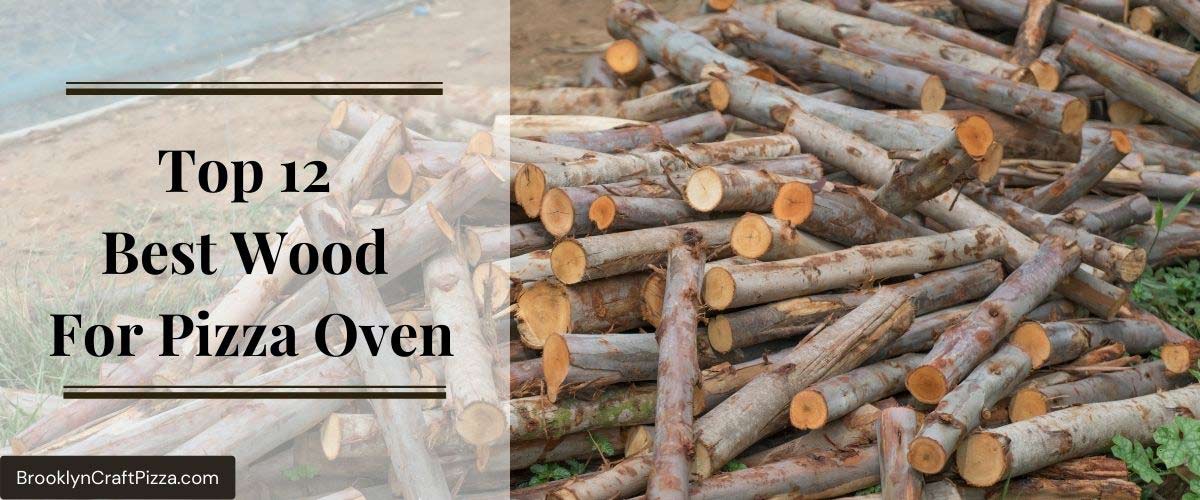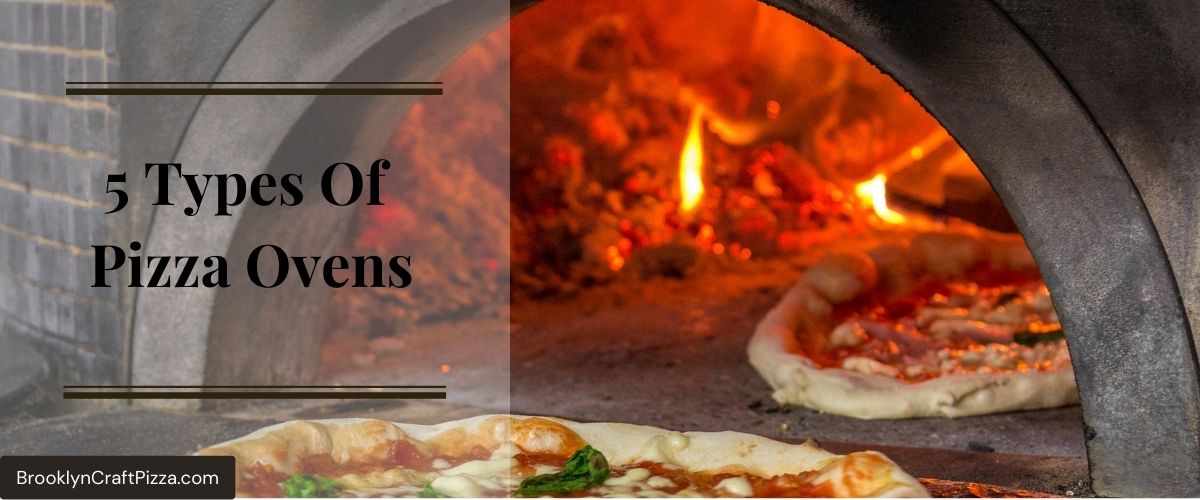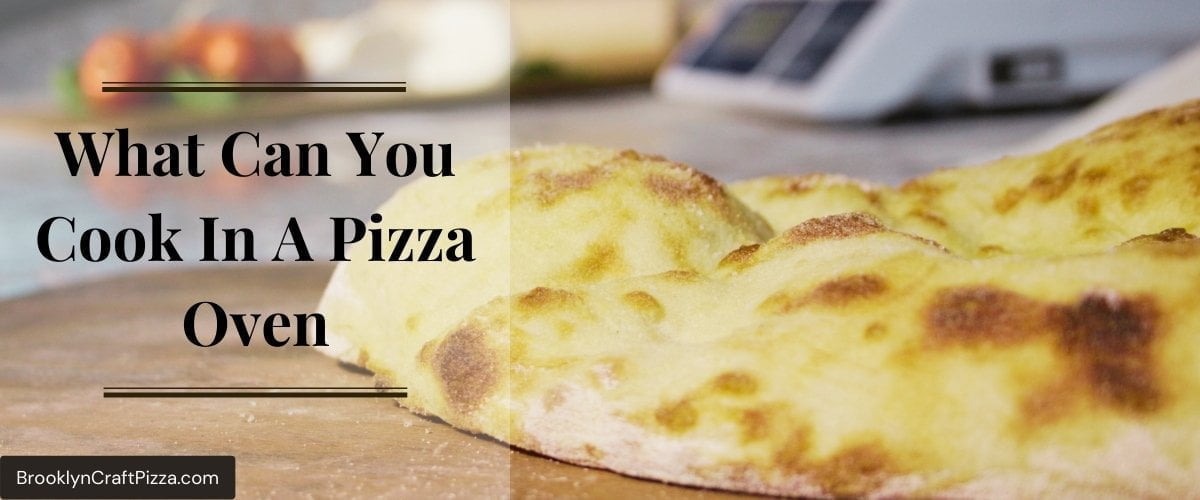Wood-fired pizza has the upper hand among all the delicious homemade recipes. You might wonder how to make wood-fired pizza and achieve a sensational taste. We can show you how. So, let’s learn how to make wood-fired pizza from the comfort of your home in a few simple steps for that superior flavor.
How to Make Wood-Fired Pizza
Of course, you will be making pizza from scratch. Which means you have to prepare everything beforehand.
1) Making the Dough
Making pizza dough from scratch should take 3 hours. Most of this time is dedicated to the dough ball rising. To make the dough, you will need the following:
- Flour (4 cups of stone-milled or bread flour)
- Yeast (30g brewers yeast )
- A pinch of salt
- Warm water (1 cup)
- Extra virgin olive oil
Before you start:
- Activate the yeast in water and let it foam.
- Create a mound of flour on your work surface and poke a hole in its middle.
- Add the salt, water, and yeast into the hole and mix the ingredients. You can also add some sugar though it isn’t necessary.
- Knead until the dough becomes soft to the touch and elastic. The dough should also be smooth and lift off the work surface easily.

Image Source: chefsmandala.com
Place your dough ball in a lightly oiled bowl, cover it with a cloth or plastic wrap, and place it in a warm place to let it rise. Depending on how many different pizzas you want, you can divide the dough ball into smaller balls.
2) Oven Preparation
As the dough ball rises, preheating the wood-fired oven is good practice. Using wood sticks, build a fire in the middle of your oven. It’s normal for soot to form, so don’t be alarmed. Make sure that the ceiling of your oven gets to 350 degrees Celsius (use an infrared thermometer to check). When this temperature is attained, the soot will have burnt off. You should notice a white patch moving to the oven floor’s bottom.
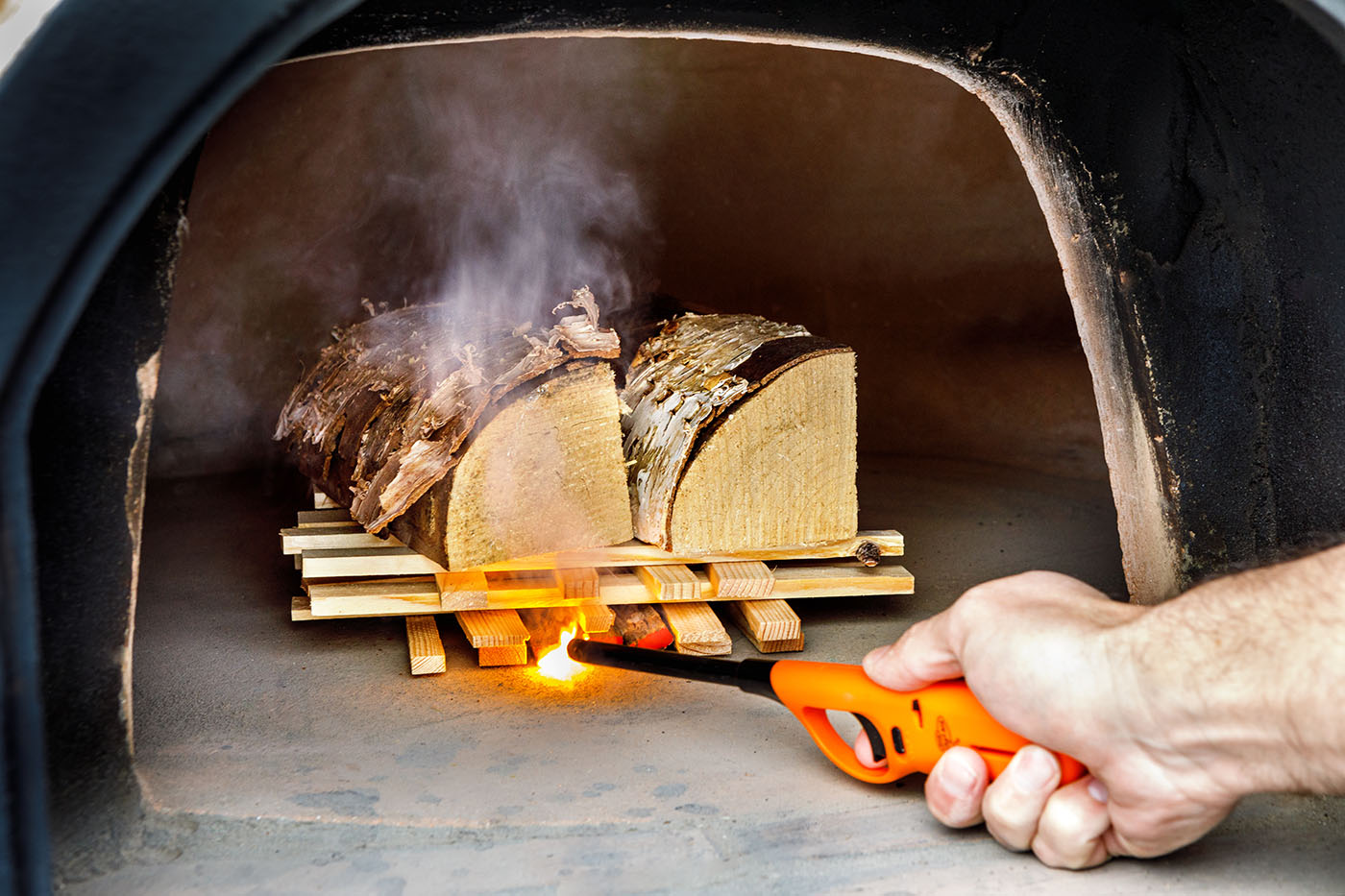
Image Source: fuegowoodfiredovens.com
After all the soot has burnt off, it indicates that it has come to temperature. Now, remember that wood-fired ovens take a while to heat up, depending on which one you have. For example, brick ovens can take 3 hours, and modern ovens can take up to 90 minutes to get the right oven temperature for pizza.
Once the oven is hot enough, move all the red hot coals to one side of the oven, and scrape the ash from the oven floor. To keep the oven temperature constant, use well-seasoned hardwood planks(any hardwood will do) and add them to the fire every 10 minutes. The oven is now ready to bake a pizza.
3) Stretch the Dough Ball
Stretching the dough needs some skill, especially if you’re doing it by hand. At this point, the dough should have risen to at least 3 times its initial size. On a floured surface (preferably on a pizza peel), stretch the dough using your fingers and stay away from the rim of the dough.
Ensure to lightly dust flour on your hands for this process. Also, work on the center and go outwards, but don’t reach the rim until the dough is stretched enough.
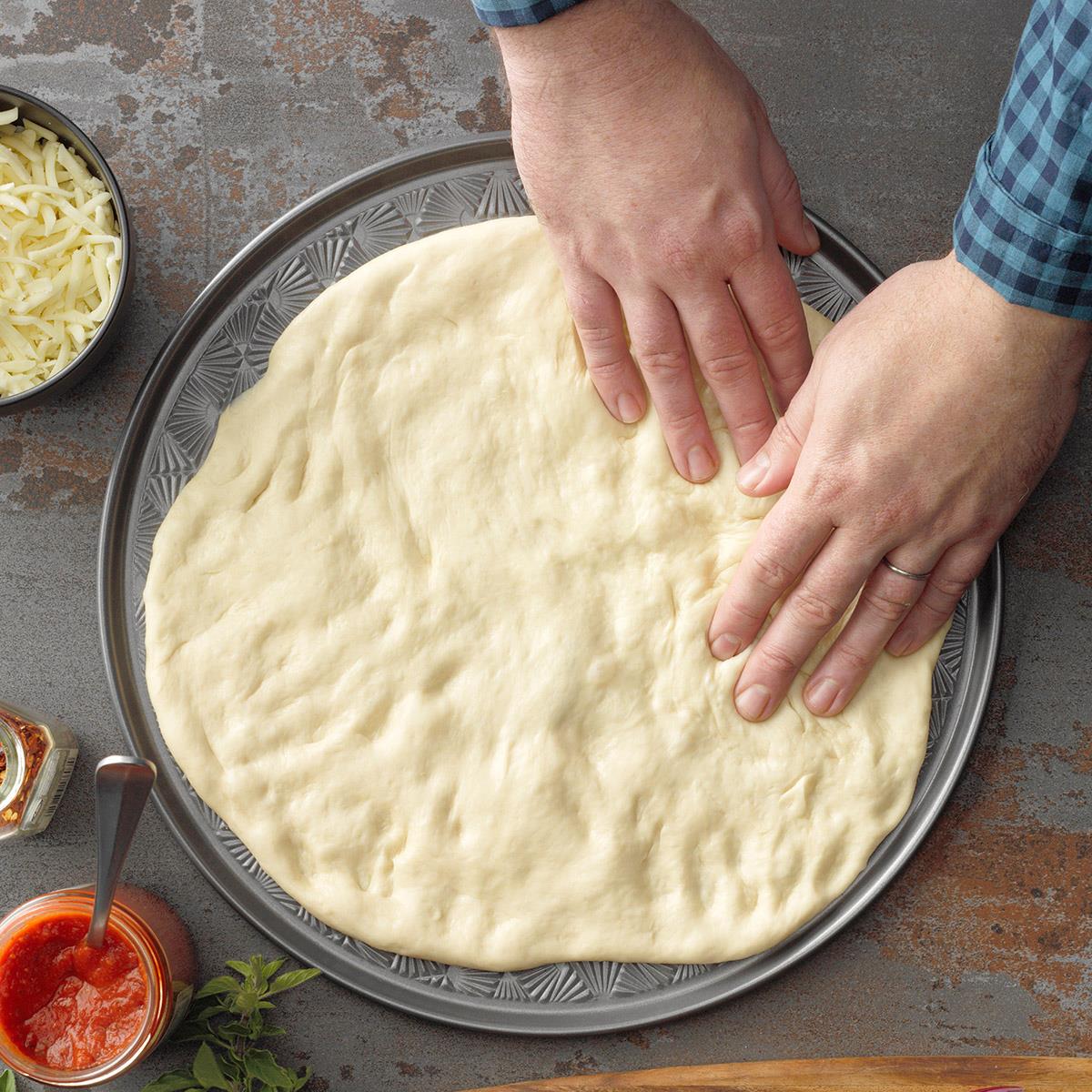
Image Source: tasteofhome.com
Some people usually prefer to use a rolling pin. However, using your hands is easier if you aren’t a seasoned pizza maker. A rolling pin can be detrimental to the process since it can toughen up the dough.
It’s easier to control pressure from your fingers while working on the dough, so your fingers should not feel the work surface beneath. After your pizza dough reaches 12 inches, it’s time to put it in the oven.
4) Toppings
Toppings are always a personal choice, especially for vegans. For instance, there are combinations of the best vegan toppings that could satiate your tastebuds. However, it is recommended not to go too heavy on the toppings. As a bonus, the veggie toppings don’t lose nutritional value since it only takes 3 -5 minutes to cook a whole pizza.
For the pizza sauce, you can easily make your own using tomatoes, garlic, and other herbs. You can also buy some for a quicker process. After spreading the pizza sauce on your pizza, sprinkle your toppings sparingly since you can always add more after the pizza is cooked.
After all, too many toppings make the pizza base soggy, dampening the taste. Finally, add a little olive oil, and it’s time to bake.

Image Source: mashable.com
Using a pizza peel, scoop the pizza and carefully place it in the oven. Instead of a pizza peel, you can also use a pizza stone which is generally preferred since it absorbs excess moisture when baking pizza. Of course, there are ways to cook pizza on a grill without a stone.
After the pizza has cooked for 40 seconds, use a turning peel to rotate it, so it cooks evenly. This will keep the pizza crunchy for a longer time. Next, wait 3-5 minutes before removing the pizza from the oven. Add more toppings like Mozzarella cheese and fresh basil leaves, and enjoy with tomato sauce or your favorite dip.
Tips for Achieving Better Wood-Fired Pizza
By this point, you have already experimented with different recipes. However, you might struggle to achieve the classic wood-fired oven taste and flavor in the pizza. Here are some tips to ensure you get the best pizza from your wood-fired oven every time.
a) Always Preheat your Oven
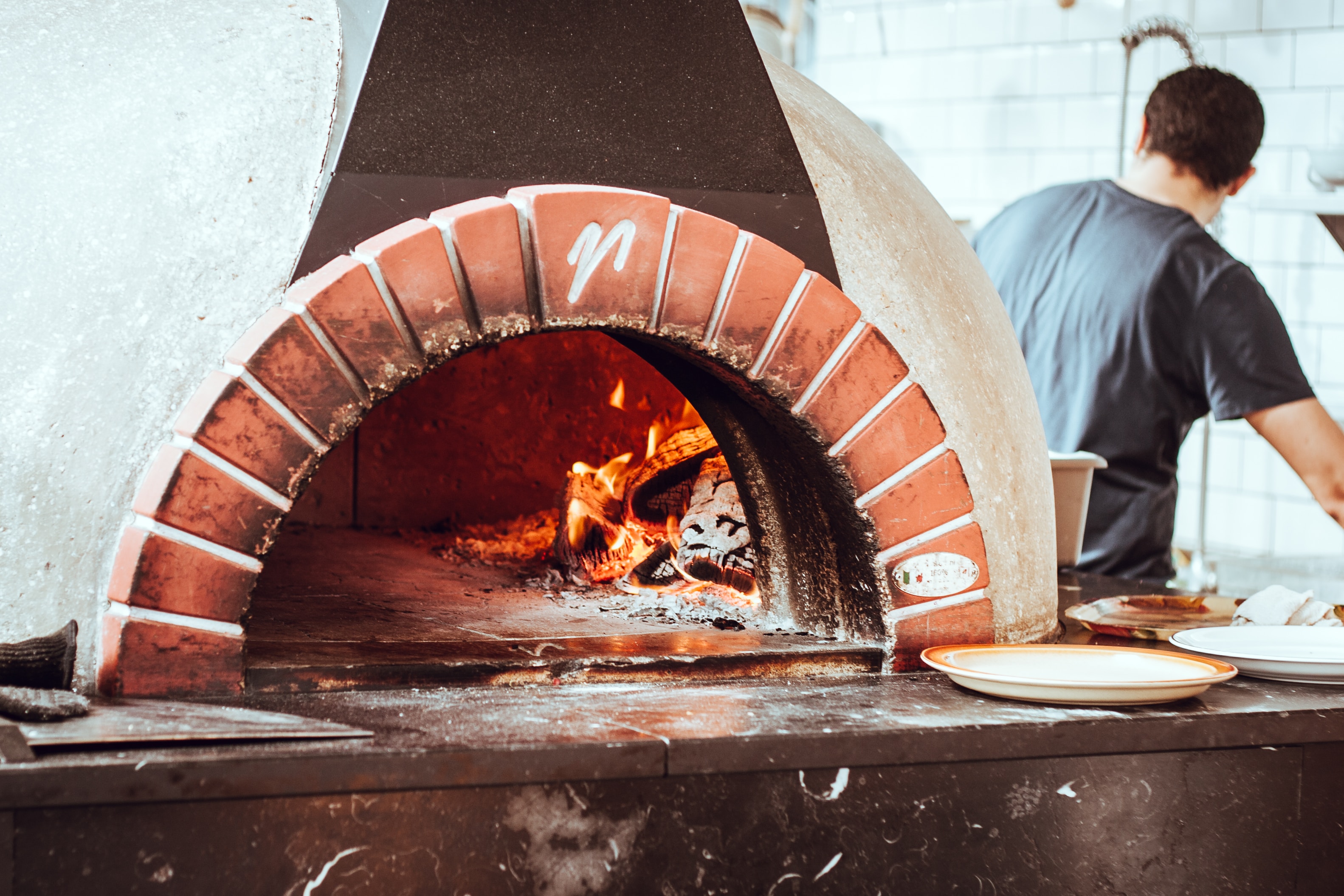
Image Source: thepizzaheaven.com
Bricks on wood-fired ovens go cold very quickly. In the same breath, they also absorb heat very quickly. Therefore, preheating your oven at least 4 hours earlier is ideal when making a pizza.
Additionally, such an oven must be kept warm, especially if you make pizzas commercially. A cold oven will heat up very slowly if you let it get cold by letting all the heat escape. The less you feed the fire; the more heat is lost.
b) Pick and Use the Same Wood
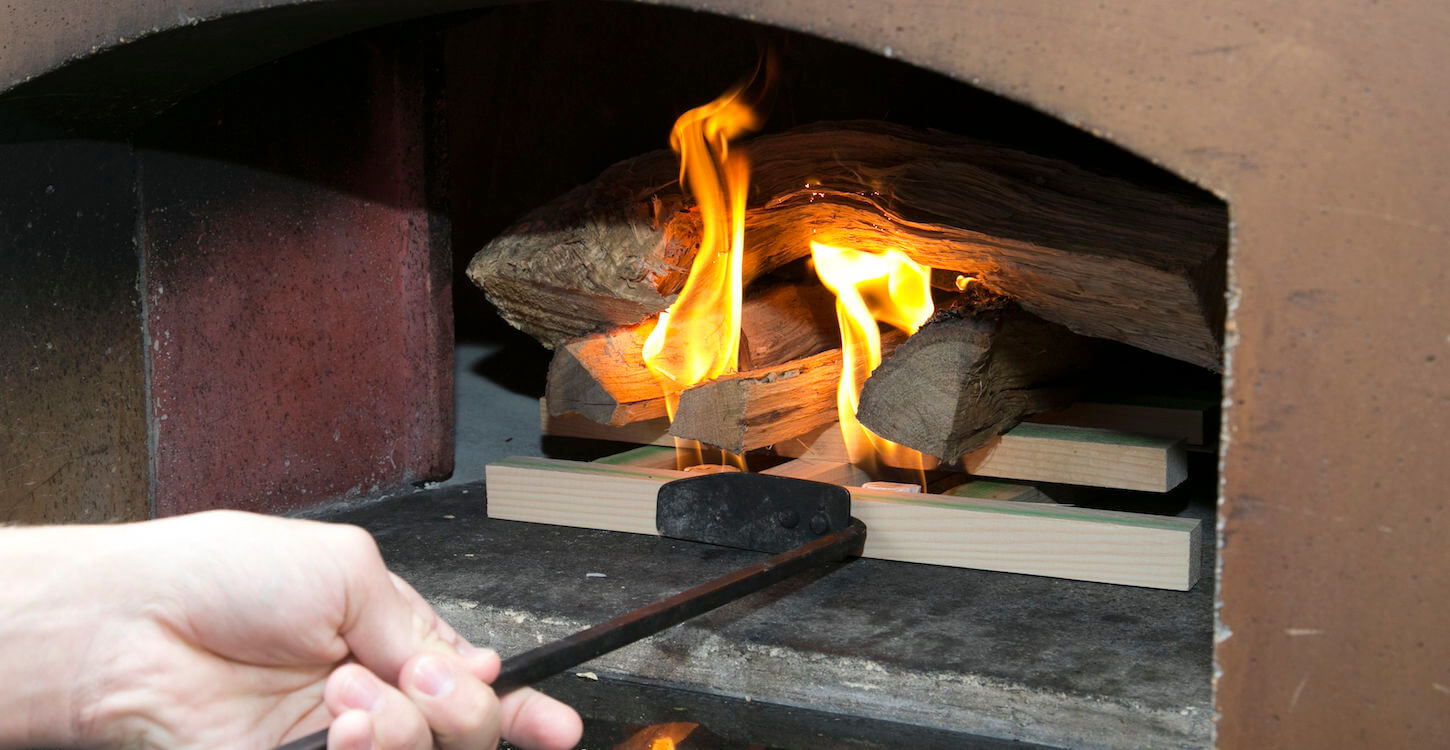
Image Source: mugnaini.com
If you switch woods regularly, your pizzas will have different tastes. Additionally, you will waste time trying to keep the pizza oven temperature even since different woods burn at different temperatures. Hence, keeping the wood the same is key.
Using the same wood with the same moisture content works well every time. Most people prefer hardwoods such as oak and hickory woods for the best pizza bases.
Furthermore, they provide a great and slow burn, and the accompanying influence on the pizza taste makes it delicious. Plus, other excellent woods for your wood pizza oven include walnut and birch.
c) Keep the Oven Heat Constant

Image Source: fontanaforni.com
Consistency is key for pizza ovens. The dome and deck always have to be warm to ensure well-cooked pizza. After all, if the temperature between the dome and the deck varies, you will have uncooked pizza.
Remember that your oven requires a steady supply of oxygen for the flames. Therefore, keeping the oven door open even when baking the pizza is crucial.
d) Get Good Dough Recipes

Image Source: taste.com
Making a pizza begins with the dough. Even if you use the best semolina flour, your pizza dough might still turn out wrong if the recipe is not right. Remember that different pizza flour types can be used for different styles and crusts. Also, recipes meant for gas ovens might not work on a wood-fired oven. Therefore, more moisture in the dough will work better for wood-fired ovens, while less moisture will work for gas ovens. This makes sense since wood-fired ovens cook at high temperatures for a few minutes.
e) Avoid Woods With High Oil or Sap Content

Image source: maggenta.com
Woods with high oil and sap content generally produce more soot. The soot will coat the inside of your oven and chimney. Similarly, woods with a higher moisture content shouldn’t be used since they also produce soot and smoke.
However, moisture content below 15% is also too dry. Therefore, only use well-seasoned wood. Woods to avoid for your pizza oven include cedar, white birch, and pine.
f) Three-touch Rule
The three-touch rule ensures you don’t have to disrupt your pizza too much while baking. After ensuring the oven is hot enough, place the pizza in the oven using a pizza peel (first touch). You might want to use the best metal pizza peel for a five-star experience since the dough won’t stick to it. Turn it around after 40 seconds (second touch), then take it out of the pizza oven when it’s done (third touch).
Why Wood-Fired Pizza is Better
Of course, Italian pizza experts were on to something when they cooked pizza on wood for hundreds of years. There are multiple reasons why wood-fired pizza is the best. Here are some compelling reasons you should always eat wood-fired pizza.
i) It Doesn’t Get Chewy
Even after being out of the oven for a long, wood-fired pizza doesn’t get chewy. You can reheat that classic Neapolitan pizza from movie night and still get the best-tasting pizza. Electric ovens produce very chewy crusts since the conditions aren’t the same
ii) Better Taste
Wood-fired pizza sets it aside from other cooking methods in terms of a smoky taste and charred flavor. Compared to deep-dish pizza, wood-fired pizza is indeed superior.
iii) Less Cooking Time
No one wants to spend 30 minutes of movie night waiting for the pizza to cook, while a wood-fired oven can cook pizza in 5 minutes.
FAQ
1) Is wood-fired pizza dough different?
Yes, it is. Most recipes meant for wood-fired pizzas have specific instructions. Due to higher temperatures associated with wood-fired ovens, the dough recipe has to be different, so it doesn’t burn on the outside. The dough uses a little less yeast and flour.
2) What’s the best wood for a wood-fired oven?
Oak is the best wood type to use in your oven. Since it’s heavy, dense, and best for high temperatures, it is recommended for the pizza oven. Most hardwoods are the perfect fuel source for the perfect pizza. Additionally, the wood has to be well-seasoned. It can’t be fresh wood.
3) What kind of cheese is good for my wood-fired pizza?
Mozzarella cheese is the best since its elasticity and flavor profile make a remarkable addition to your pizza. You can also mix mozzarella with other cheeses like Parmesan and Grana Padano. They are hard cheeses, and when mixed with a block of soft cheese, they are perfect for toppings.
4) Is wood-fired pizza healthier than normal pizza?
Yes, it is. Usually, with normal pizzas, the pizza and veggie toppings, like fresh basil, stay in the oven for long and lose their nutritional value. However, the pizza stays in the oven for 3 minutes with wood-fired pizza. You get more nutritional value since the vegetables hold onto their nutrients.
5) Will my wood-fired pizza dough stick on the pizza peel?
Yes, it will. A little sticking is normal. However, you might want to lightly dust your pizza peel with extra virgin olive oil or some bread flour. It prevents the pizza from sticking when you place the pizza in the oven. The dough tends to stick to steel pizza peels. You can also use a wooden pizza peel to avoid sticking.
The Bottom Line
Wood-fired pizzas are the elite in the pizza world. Once you make it yourself, you won’t be able to stomach delivery pizza. Most conventional ovens will not get you wood-fired pizzas. Thus, you require a wood-fired oven for that. Investing in one is a great start to being a pizza enthusiast and finally having the pizza you deserve.
Featured Image Source: directstoves.com


